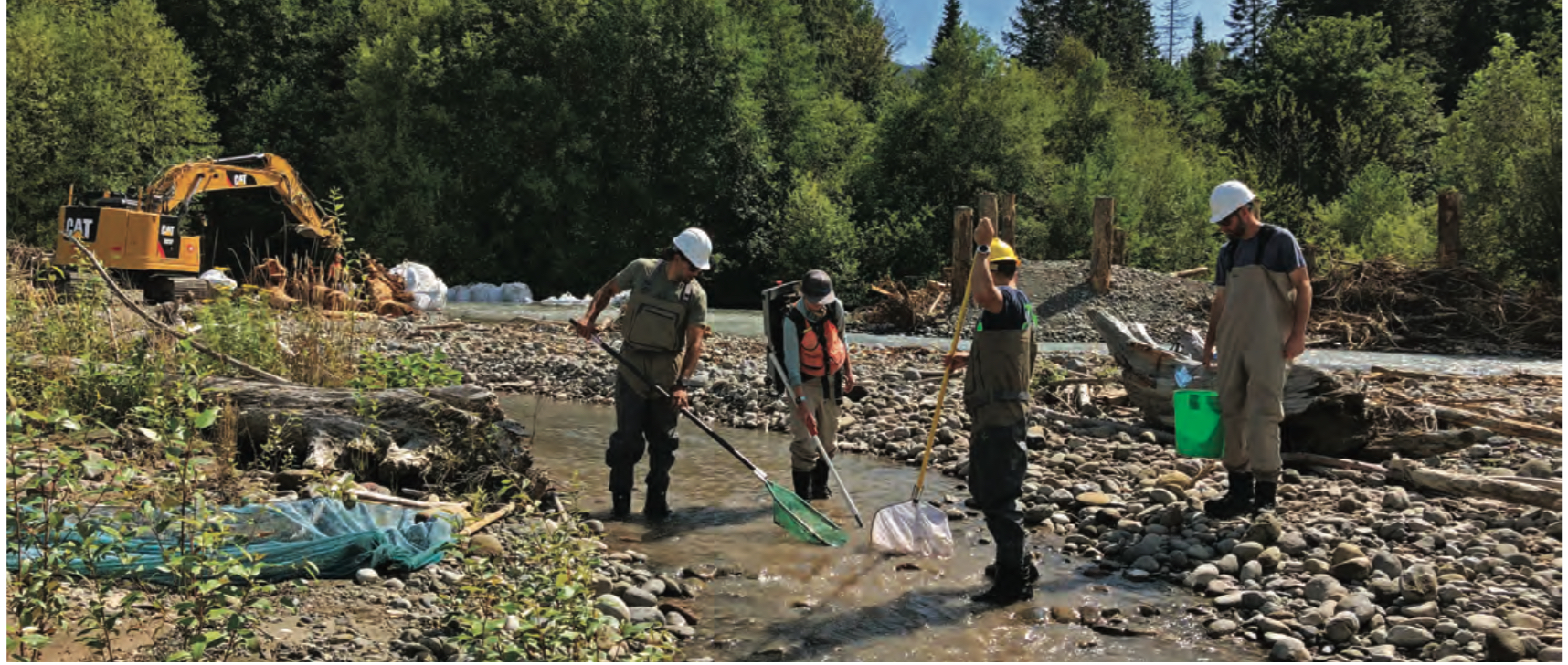Salmon Habitat Restoration Completed in Nooksack River

Nooksack tribal staff rescue fish from an in-water construction area of the Farmhouse Reach. Fish exclusion minimizes construction impacts by isolating and temporarily diverting the channel before the fish are removed, identified, counted and safely released downstream.
photo: Lindsie Fratus-Thomas
by Kari Neumeyer
The last of 127 engineered logjams were placed in the Farmhouse Reach of the North Fork Nooksack River this summer, completing an extensive multiyear salmon habitat restoration project. The reach is between Maple Falls and Deming (closer to Maple Falls).
The Nooksack Tribe installed large woody structures in the North and South forks of the Nooksack River nearly every year since 2008. This summer, the final 56 logjams were placed in the 3-mile-long reach of the North Fork located near Maple Falls, completing restoration that began in 2014.
Restoring river habitat is essential to recovering threatened salmon populations in the Nooksack watershed. Habitat in the North Fork Nooksack was degraded and made unstable by years of instream wood removal, clearing of riparian forests and more frequent large floods.
“The Farmhouse Reach is one of the most unstable and volatile reaches within the North Fork Nooksack with high channel turnover rates. It’s kind of like a firehose,” said project manager Lindsie Fratus-Thomas, who has managed the project for the tribe through all five construction seasons. “This project is a process-based restoration project in which one of the goals is to stabilize the main channel and protect those nice side channels, which are the preferred habitat for salmon in this system.”
Engineered logjams stabilize side channels for salmon to spawn and rear in, and form pools for them to rest in. Projects like these restore natural habitat processes. For example, logjams slow currents and create areas where gravel accumulates to form islands.
“As trees colonize those islands and grow to maturity, the islands stabilize and grow, helping to form the side channels that are so productive for salmon,” said Treva Coe, Nooksack watershed restoration program manager.
Ambitious projects like these are only possible with the hard work and support of staff from many agencies and partners, including the expertise from several Nooksack Natural Resources tribal staff, engineering consultants, log supply and construction contractors, and funding and permitting agencies, Fratus-Thomas said. This year, for the first time, BNSF Railway partnered with the tribe to donate trees they had removed because they posed a hazard to railroad operations. The U.S. Forest Service provided a similar wood donation to the project in one of the previous phases in 2016.
First published in the Fall 2020 issue of: Northwest Treaty Tribes: Protecting Natural Resource for Everyone. A publication of the Northwest Indian Fisheries Commission https://nwtreatytribes.org/publications/magazine/
_________________________
Kari Neumeyer is a regional information officer for the Northwest Indian Fisheries Commission.
